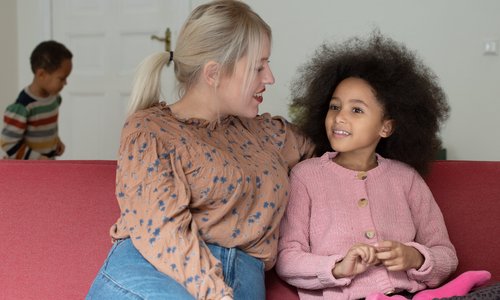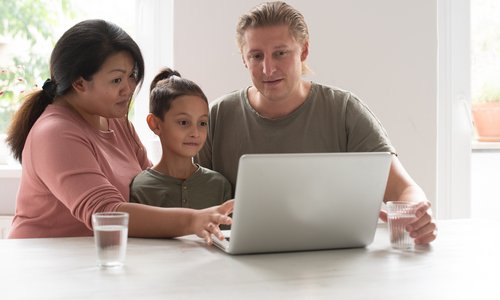
Prevention should help to anticipate sexual violence against children and adolescents and provide them with quick and appropriate help as well. This also includes recognising perpetrators' strategies through education and knowledge transfers, i.e. disrupting the initial approaches and preparation of future acts as well as ending ongoing acts. The term ‘intervention’ is also used to describe the termination of these acts.
No child can protect itself alone
This is why prevention measures are directed at different target groups and with different emphases. Sexual abuse mainly occurs when perpetrators can use power and dependency structures with children and adolescents, so the core question regarding prevention is therefore: who has the power or at least the opportunities "outside the perpetrators' circles" to prevent these acts?
Children and adolescents cannot protect themselves alone. They need adult contacts who know how perpetrators act, what signals children and adolescents send out and know what ways of getting help are available to them. Children and adolescents are still dependent on adults for protection against abuse even if support from friends of the same age becomes more important as they get older. These contacts are first and foremost people from their immediate environment, i.e. their parents, but also teachers and educators, paediatricians, trainers or neighbours. Prevention can also start with (potential) offenders in order to prevent first and repeat offences.
Prevention has many faces and places
Prevention needs respect: it will have a fundamentally preventive effect if the needs of children and adolescents are taken seriously, if these needs are respected and if they are guided by children's rights. This approach is needed everywhere, be it in the family, at school, in the day-care centre, in a residential group, in a clinic or in the leisure sector.
Institutional prevention concepts play a major prevention role in facilities and organisations. They can reduce the risks of sexual violence in their own sphere of influence and provide help to children and adolescents who have suffered abuse.
Consider abuse to be possible
A major challenge with regard to prevention is that abuse is so unimaginable to many people that they do not believe it is possible - especially not in their immediate environment. This is true for family members, neighbours and acquaintances as well as educational and medical specialists. So this applies to everyone: Basic information about sexual abuse is important in order to be able to protect children and adolescents. It must be made clear that suffering abuse is not only a risk but a real possibility in the life of a growing child or an adolescent. It never "happens" by accident, but always on purpose, usually planned and well prepared as well. This insight is needed so that prevention has a chance.





